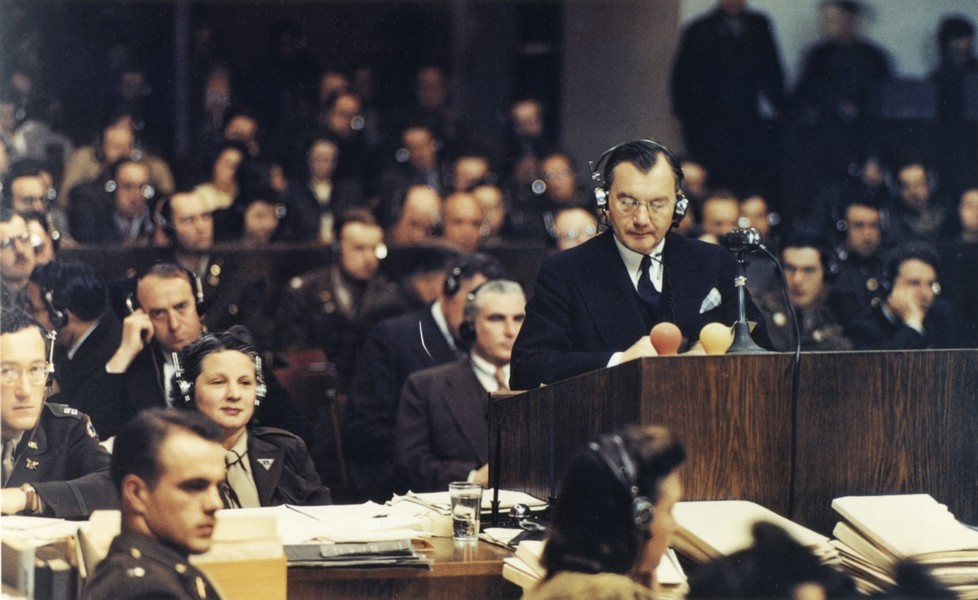
This trial came to be known as the Nuremberg trials due to the particular location where the trial unfolded. Nuremberg was a symbolic city to the Nazi party and was located in the center of Germany. It had become heavily damaged throughout the war due to aerial bombing and street to street fighting as allied troops cleared the city of the German Army on their way to Berlin, but was chosen regardless as the site of these trials due to its still intact large court house called The Palace of Justice, and attached prison as well as a nearby hotel which was capable of accommodating members of the prosecution team. Additionally, Nuremberg was also chosen due to its significance to the Nazi party. Annual Nazi rallies were held in this city which had become the center of Nazi ideals, therefore it was ironic to bring justice to the men who were responsible for the atrocities caused by them in the same city in which they once celebrated.
The preparations for the Nuremberg trial had commenced months before the defeat and eventual surrender of Nazi Germany in the month of May, 1945. Preparations for this trial had already begun by the United States, The Soviet Union, United Kingdom and France. On August 8th, 1945 signed the London Charter, an international agreement established the formation of the international Military Tribunal (IMT) for the trial and punishment of the major war criminals of the Nazi party, additionally, all signatories agreed on the format on how the trials would be conducted as well as the charges on which the IMT would prosecute the defendants. These charges were in such:
1. “Crimes against Peace: Namely, planning, preparations, initiation or waging of a war of aggression, or a war in violation of international treaties, agreements or assurances, or participation in a common plan or conspiracy of the accomplishment of any of the foregoing.”
2. “War Crimes: Namely, violation of the laws or customs of war. Such violations shall include, but not be limited to, murder, ill-treatment of deportation to salve labor or for any other purpose of civilians population of, or in, occupied territory, murder or ill-treatment of prisoners of war or persons on the seas, killing of hostages, plunder of public or private property, wanton destruction of cities, towns or villages or devastation not justified by military necessity.”
3. “Crimes again humanity: Namely, murder, extermination, enslavement, deportation, and other inhumane acts committed against any civilian population, before or during the war or persecutions on political, racial or religious grounds in execution of, or in connection with, any crime within the jurisdiction of the Tribunal, whether or not in violation of the domestic law of the country where perpetrated.“
“Leaders, organizers, instigators and accomplices participated in the formulation or execution of a common plan or conspiracy to commit any of the foregoing crimes are responsible for all acts performed by any persons in execution of such plan”1.
As a result of the trial, the twenty-two men of the High-command positions of the Nazi party which included Reichsmarschall Hermann Goering, German President Karl Doenitz, Hitler’s deputy Rudolf Hess and Wilhelm Frick amongst other notable and High-ranking officials who were tried by the tribunal had met their fate when twelve members were sentenced to death by hanging and seven were sentenced to terms in prison. Other subsequent trials took place after the sentence and conviction of these major war criminals. However, the four allied powers, France, the United Kingdom, Soviet Union and the United States were unable to uphold their previous agreement known as the London Charter and therefore conducted their independent trials to prosecute and convict other members of the Nazi party that were responsible were participants to Hitler’s crimes.
